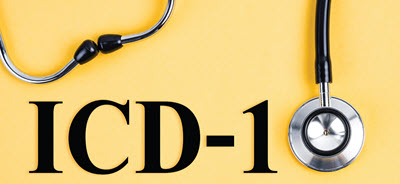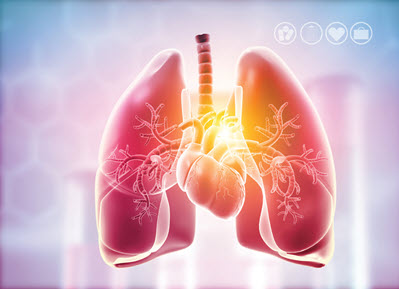Prime yourself before the codes take effect October 1.
Pulmonology coders can look forward to several additions to the ICD-10-CM code set this autumn. With more than 500 additions, the 2024 code set provides new respiratory diagnosis, foreign body sensation diagnosis, social determinants of health (SDOH) codes.
Check out the ICD-10-CM codes that you’ll need to know when the new code year begins on Oct. 1, 2023.

Get to Know the New Pneumonia Codes
Effective Oct. 1, 2023, J15.6- (Pneumonia due to other Gram-negative bacteria) will be converted into a parent code and feature two new codes within the code family:
In the 2023 ICD-10-CM code set, J15.6 featured “Pneumonia due to other aerobic Gram-negative bacteria” and “Pneumonia due to Serratia marcescens” as synonyms under the code descriptor. These synonyms will be moved to J15.69 when the 2024 code set takes effect.
Build Your BOS Coding Knowledge
The J44.- (Other chronic obstructive pulmonary disease) code category sees multiple changes in the 2024 code set. The code set adds the J44.8- (Other specified chronic obstructive pulmonary disease) code subcategory with the following code additions:
Child code J44.81 features an “Obliterative bronchiolitis” synonym, while J44.89 includes “Chronic asthmatic (obstructive) bronchiolitis” and “Chronic emphysematous bronchitis” synonyms. Code J44.81 also features Code first and Code also notes, which provide additional coding instructions if any of the listed conditions apply to the patient’s diagnoses.
Diagnosis analysis: Bronchiolitis obliterans syndrome (BOS) is a form of chronic lung allograft dysfunction. BOS is an inflammatory disease that progresses quickly, damages the lung’s airways, and can cause respiratory failure and death anywhere from two to four years after diagnosis.
Additionally, the Excludes1 note listed under J44.- will be converted to an Excludes2 note on October 1.
Note: Learn more about why it’s important to pay attention to annual code note changes in the article, “Review Code Note Changes to Ensure Correct ICD-10-CM Coding,” later in this issue.
Report Lung Allograft Dysfunction on October 1
Chapter 10 also sees the addition of the new J4A.- (Chronic lung allograft dysfunction) code category. This category covers the following conditions:
Differentiate the diagnoses: Chronic lung allograft dysfunction (CLAD) occurs when the patient’s immune system attacks the lung’s airways. Restrictive allograft syndrome (RAS) is a form of CLAD that occurs after a lung transplant procedure. The patient can experience peripheral lung fibrosis and restricted breathing because the lung fails to function properly.
Know How to Code FB Sensations
Effective October 1, the R09.- (Other symptoms and signs involving the circulatory and respiratory system) code category features a new subcategory, R09.A (Foreign body sensation of the circulatory and respiratory system), which includes:
These codes let you provide greater specificity when a patient states that they feel like there is a foreign body in the listed areas, when in fact no foreign body is there.

Prepare for SDOH Code Additions
You’ll also find new social determinants of health (SDOH) codes in the 2024 ICD-10-CM code set, including these that you may use in pulmonology:
Clinicians should be documenting SDOH and, in general, you should be coding them. Presently, “more attention is being drawn to patients’ social determinants of health,” says Carol Pohlig, BSN, RN, CPC, manager of coding and education in the department of medicine at the Hospital of the University of Pennsylvania in Philadelphia. By accurately documenting SDOH, healthcare providers can better understand the factors affecting a patient’s health, leading to improved care management, resource allocation, and health outcomes.
